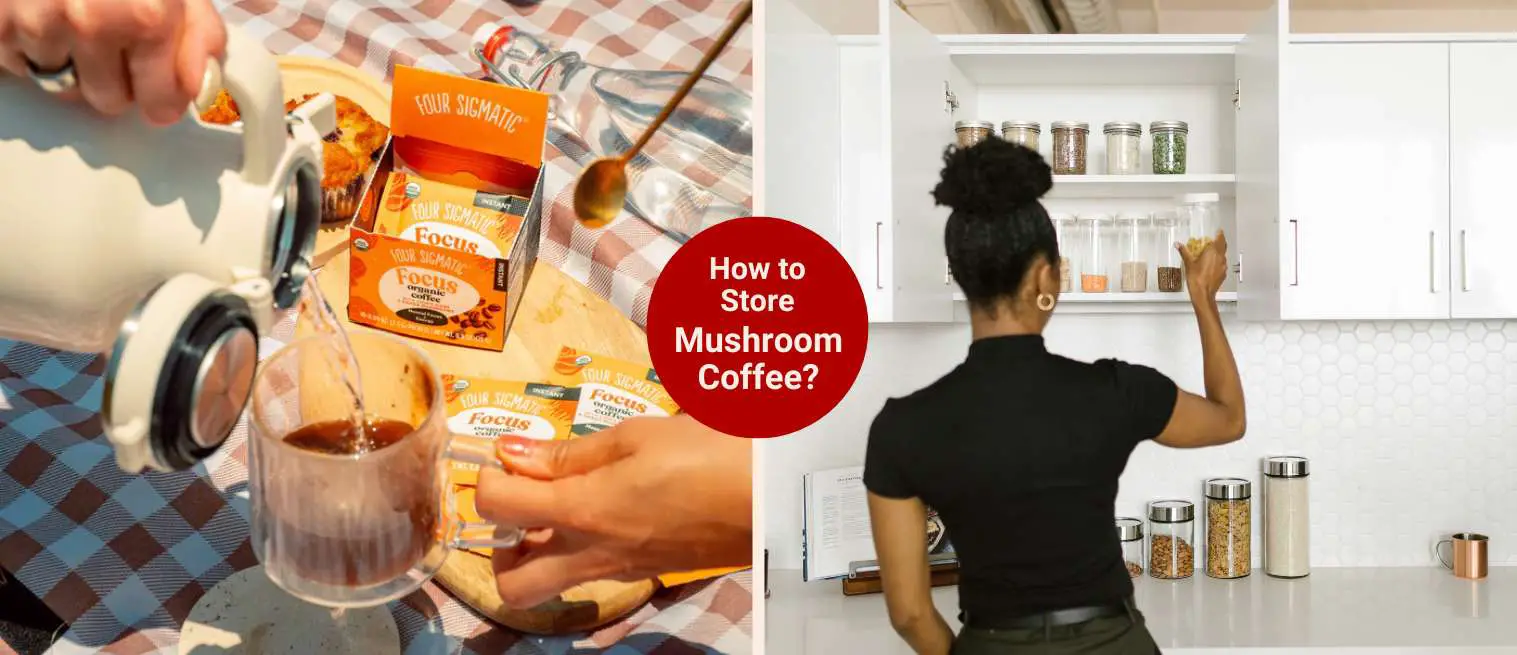How Do You Store Mushroom Coffee? (Keep It Fresh & Potent)
Last updated on September 12th, 2025 at 12:08 pm
Have you ever wondered why your mushroom coffee loses its punch faster than you’d like?
A few days ago, I wrote a post on the benefits of mushroom coffee. But here’s the thing: those benefits don’t mean much if you don’t protect the freshness.
I quickly learned that leaving the bag half-open in the pantry was a mistake. The flavor went flat, the powder clumped, and the adaptogens I wanted were likely losing their strength too.
That’s when it clicked: how you store mushroom coffee matters as much as the brand you buy.
In this guide, you’ll discover how to keep mushroom coffee fresh and potent. You’ll learn the best containers, the right spots in your kitchen, how long each type lasts, and the common storage mistakes that can ruin everything. So let’s start brewing!
Key Takeaways
- Keep it airtight: Use sealed glass jars, vacuum tins, or the original packaging to protect freshness and potency.
- Avoid moisture, heat, and light: Store mushroom coffee in a cool, dark, dry spot—never near the stove, fridge, or in clear containers.
- Shelf life matters: Instant packets last the longest (12–24 months), while powders and opened blends lose strength within weeks to months.
- Skip the fridge: Moisture from refrigeration ruins texture and bioactive compounds—room temperature storage is best.
Why Proper Storage Matters for Mushroom Coffee?
I used to toss my mushroom coffee in the pantry with the bag half open. Well, big mistake! The flavor faded fast, and the benefits did too. So here’s what happens:
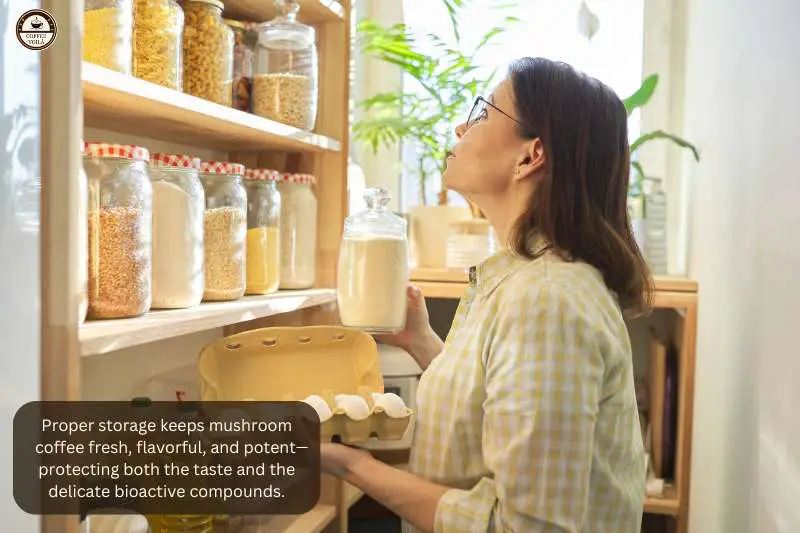
Air Kills Flavor
Regular coffee lovers already know this. However, once the grounds come into contact with oxygen, the oils break down, and that fresh aroma loses its appeal.
Mushroom coffee blends are no different. You leave them exposed and both the coffee and mushrooms lose their punch way faster than you’d like.
Moisture is the Enemy
If you leave the jar on the counter right by the kettle, steam sneaks in, clumps start forming, and suddenly your powder’s a sticky mess. Even worse, that extra moisture can mess with the mushroom compounds like beta-glucans. This makes your coffee less effective over time.
Light & Oxygen Damage
Some of the best stuff in mushrooms is antioxidants and adaptogens. But the problem is they’re sensitive to light and air. A clear jar looks nice on the counter. However, sunlight and oxygen quietly chip away at those bioactive goodies.
Longer Shelf Life, Better Results
At the end of the day, proper storage just means you get consistent results. Every scoop tastes the way it should, and you’re not wasting money on a blend that’s gone stale or weak before the bag is even finished.
Notes: treat mushroom coffee like you would good beans—airtight, cool, and dark. Your gut and your wallet will thank you.
Storage Tips by Type of Mushroom Coffee
Not all mushroom coffee is the same and how you store it depends on the form you buy. So, here are some recommendations for each one:
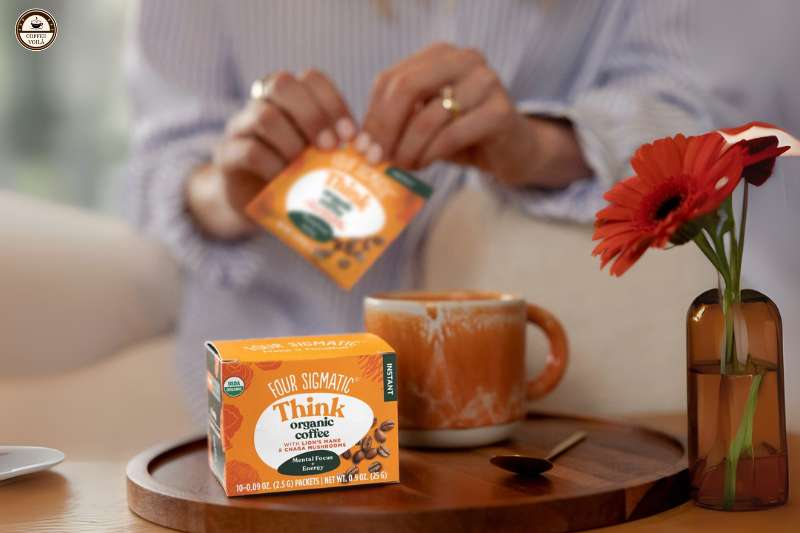
Instant Mushroom Coffee Packets
These are hands-down the easiest to deal with. They’re already pre-portioned, individually sealed, and the most shelf-stable option you’ll find.
When I first started drinking mushroom coffee, I used packets from Four Sigmatic. I didn’t think twice about storage and they lasted months without losing flavor.
Still, there are a couple of small habits that make a big difference:
- Step 1) Don’t scatter them: Resist the urge to toss packets all over the pantry (yep, I’ve been guilty of that).
- Step 2) Keep them in the original box: It’s designed to protect them from air and light, so it’s the easiest option.
- Step 3) Transfer to an airtight container: If you want extra freshness, move them into a sealed jar or tin. A Ball Mason Jar works great, or you can level up with a Fellow Atmos Vacuum Canister.
- Step 4) Store away from heat and moisture: Even sealed packets can pull in humidity if they’re left near a kettle or stove.
Notes: Basically, store them sealed, dry, and away from sunlight, and you’ll enjoy the same flavor from packet one to packet twenty.
Ground Mushroom Coffee Blends
If you’ve ever bought a fancy bag of ground coffee and then forgot it on the counter for weeks, you already know how quickly the flavor disappears.
Mushroom coffee blends are no different. In fact, they’re even more sensitive. You’re protecting not just coffee oils but also the mushroom compounds you paid for.
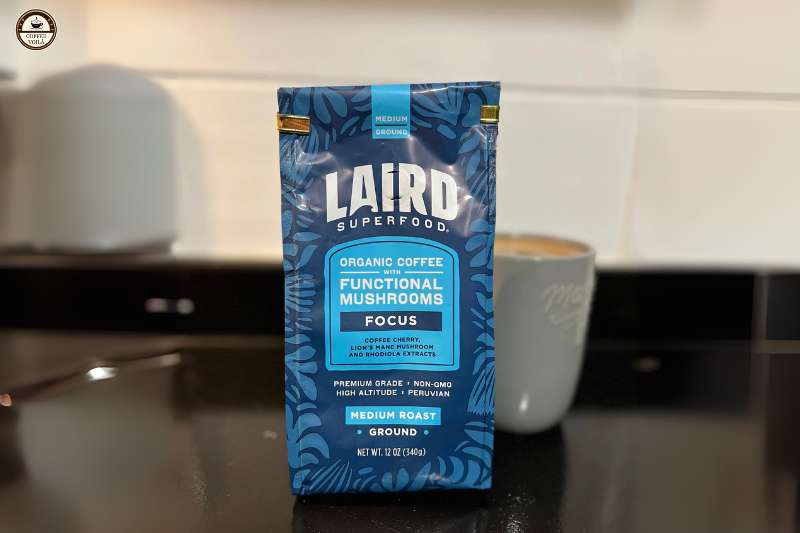
I made this mistake with a bag of Laird Superfood Mushroom Coffee once. Left it rolled up in its flimsy bag near the toaster. Within a couple weeks, the smell was flat, and the brew tasted… dull. Not terrible, but definitely missing that fresh, earthy kick.
How to Store Ground Blends (Step by Step)
- Step 1) Transfer to an airtight container: Don’t trust the resealable bag. It rarely seals tight enough. Instead, use a tin or glass jar with a rubber gasket.
- Step 2) Keep it cool and dark: A pantry or cabinet away from the stove is perfect. As explained, heat and light will speed up staleness.
- Step 3) Use it up quickly: Once opened, try finishing the bag within 4–6 weeks. Beyond that, the flavor fades, and adaptogens lose their potency.
- Step 4: Scoop smart: Always use a dry spoon. The reason is moisture sneaks in faster than you think and can cause clumping or worse.
Notes: Treat it like regular coffee grounds but with a little extra care. Do that, and every cup will taste fresh.
Mushroom Coffee Powders (DIY Add-Ins)
If there’s one form of mushroom coffee that gave me the most headaches with storage, it’s loose powders. I mean, they’re extra sensitive to moisture and humidity. So, if you’re not careful, you’ll end up with a clumpy brick instead of a smooth scoop.
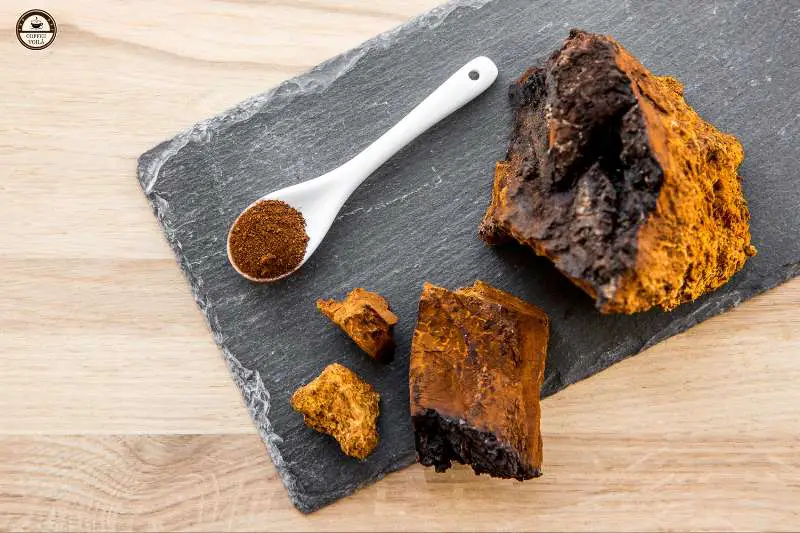
How to Store Mushroom Coffee Powders (Step by Step)
- Step 1) Transfer immediately: Don’t leave powders in flimsy bags. Move them into a dark, airtight glass jar. A simple Mason jar works, or if you want extra protection, grab one with a tight vacuum seal.
- Step 2) Add a desiccant pack: Powders pull in moisture fast. For this reason, toss in a food-safe silica or clay pack to keep things dry. It’s a small step, but it makes a huge difference.
- Step 3) Store in a dry zone: Even a little steam from cooking can clump powders fast. So, save the jar in a pantry or cabinet instead of on the counter.
- Step 4) Scoop smart: Always use a dry spoon. Even a tiny bit of water on the scoop can start clumping inside the jar.
Notes: Mushroom powders are fantastic for DIY blends because you control the dose. However, they need to be more careful than instant packets or ground coffee.
Can You Store Mushroom Coffee in the Fridge or Freezer?
Often, people talk about freezing beans. So it’s natural to wonder if mushroom coffee would benefit from the same trick. And the short answer: Not really! At least not in the way most of us store things in the kitchen.
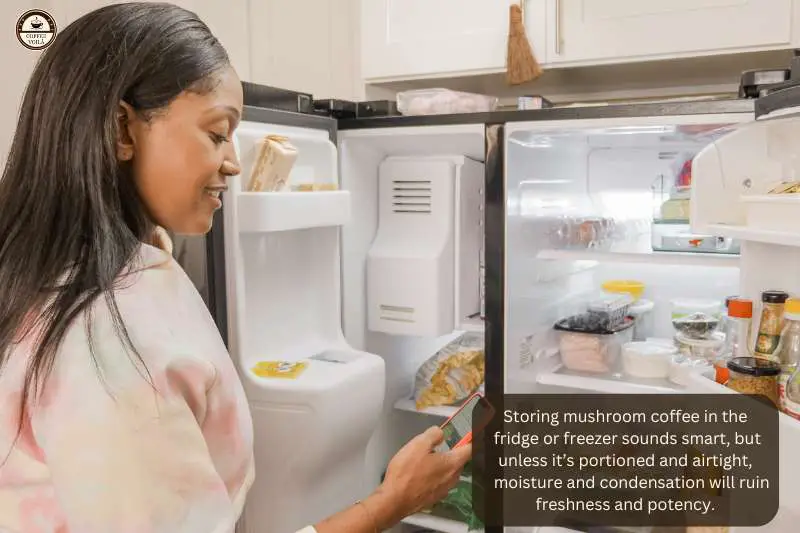
Fridge (Not Recommended)
Putting mushroom coffee in the fridge sounds smart at first. However, it’s a recipe for disaster. The fact is that refrigerators are humid, and that moisture sneaks into powders or grounds every time you open the container.
Before long, you’ll find clumps, off smells, or even a weaker brew. The bioactive compounds like beta-glucans and antioxidants also break down fast in that damp environment.
Freezer (Only Works in Special Cases)
Freezing can be an option, but it comes with rules. You need to portion your mushroom coffee into airtight containers or sealed bags before freezing.
Because once you pull a big bag in and out of the freezer, condensation forms inside. That’s when clumps and flavor loss happen. If you’re buying in bulk and know it’ll take you months to finish, freezing in single-use portions can help extend freshness.
How Long Does Mushroom Coffee Last?
Here’s a quick breakdown you can actually use:
| Type | Shelf Life | Notes |
|---|---|---|
| Instant packets | 12–24 months (sealed) | Most shelf-stable; just keep them dry and sealed. |
| Ground blends | 3–6 months (sealed), 4–6 weeks after opening | Treat them like regular coffee grounds; freshness drops quickly once opened. |
| Mushroom powders | Up to 1 year unopened, ~3 months after opening | Extra sensitive to moisture; use airtight jars with desiccant packs for best results. |
Notes: Always check the expiration date on the package. If the coffee starts smelling flat, tasting dull, or clumping strangely that’s your sign it’s past its prime.
Last Thoughts
What about you? How do you store mushroom coffee at home? Have you ever noticed it clumping or losing flavor faster than expected? Do you prefer instant packets for the shelf life or powders for the flexibility?
Go below and share your tips or slip-ups in the comments. I’d love to hear them and with that… voilà!

